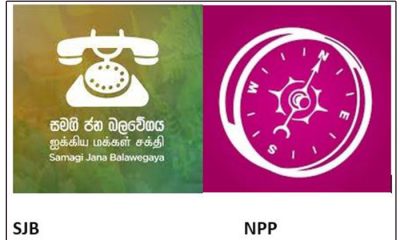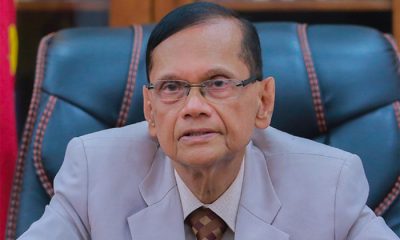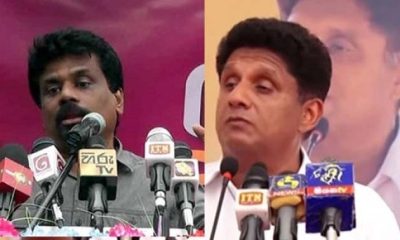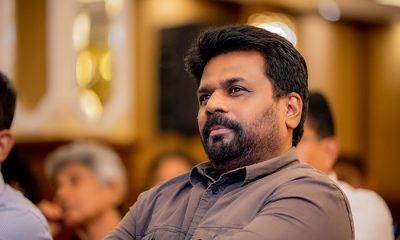Features
Karnataka, Thailand and Turkey: Election Lessons and Presidential Prospecting
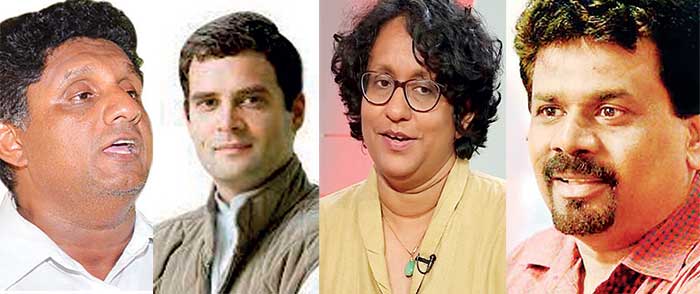
by Rajan Philips
There have been three different elections in as many countries over the last two weeks: Karnataka State Assembly elections in India, presidential and parliamentary elections in Turkey, and parliamentary elections in Thailand. In Karnataka, the nationally triumphant BJP suffered a significant state defeat, and the nationally struggling Congress Party registered an outright state victory. Expectations were frustrated in Turkey, but were spectacularly exceeded in Thailand. In Turkey, there were predictions that Kemal Kilicdaroglu of the Republican Peoples Party (CHP founded by Kemal Ataturk), who became the unifying opposition candidate, would win the presidential race in the first round and end the two decade long authoritarian rule of President Recep Tayyip Erdogan. But the results were a virtual tie, forcing a runoff election between the two men. In the parliamentary elections, Erdogan’s Justice and Development Party (AKP) has won a comfortable majority, which will ensure the AKP’s continuing presence in the echelons of power even if Erdogan were to lose the runoff election on May 28.
The parliamentary election results in Thailand are a stunning boost for democratic parties in Asian countries fighting authoritarian rulers, and for energized Young Turks seeking to get rid of the old political turkeys. Exceeding all expectations, the young and upstart Move Forward Party (MFP) has won 151 of the 500 lower house seats, pushing the well established Pheu Thai Party (PTP) of the exiled former Prime Minister Thaksin Shinawatra into second place with 141 seats. In the biggest surprise, described by many as “a political earthquake,” the incumbent military-backed government of Prime Minister Prayuth Chan-ocha was utterly defeated and relegated to 36 seats. However, under Thailand’s bizarre rule for electing a Prime Minister after a general election that Chan-ocha put in place after capturing power in the 2014 military coup, he could again become Prime Minister.
The bizarre rule is based on Thailand’s bicameral system comprising a lower house of 500 elected members (representing the people) and an upper house of 250 appointed members (mainly representing the army, the monarchy and related vested interests). After an election, the Prime Minister is elected from among candidates nominated by political parties by a joint session of all 750 members the two houses. A party could even nominate a total outsider to be elected as Prime Minister if she/he could cobble together 376 votes from the two houses.
To pre-empt the Prayuth Chan-ocha from canvassing to be PM again, the two leading parties from the polls (MFP and PTP) have formed an alliance of six parties commanding 309 members to nominate MFP leader Pita Limjaroenrat as their candidate for Prime Minister. Their total is short of the 376 tally required for majority. However, many members of the upper house have indicated that they will not thwart the will of the people and elect a different nominee as Prime Minister. Nothing is going to be finalized until the Election Commission finalizes the official results within two months, and the two houses are convened for their joint session likely in July.
Demonstration Effects
Turkey is a member of NATO and is an aspirant to join the European Union. Who gets to be its next president will have broader implications for the Middle East, EU and the ongoing standoff between the West and Russia including the war over Ukraine. The Thai elections have no comparable geopolitical implications, but can have what political scientists call the ‘demonstration effect’ in Asian countries where elections are being delayed, denied, or otherwise manipulated. Sri Lanka and Pakistan are two (South) Asian countries where unelected governments are shy of calling elections. In Pakistan, the government went a step further and tried to imprison its principal opponent, Imran Khan. The move, as I wrote last week, backfired spectacularly.
In Sri Lanka, President Wickremesinghe has delayed local government elections by withholding funds in spite of a Supreme Court directive to make funds available. He has been floating balloons of national reconciliation, inspiring rumours about staggered provincial elections, and firing and hiring provincial governors at presidential pleasure. Even the usually pliant Tamil political parties have gotten sick of his games and have given their twin ultimatums: Either a new constitution Or new elections. The first will go nowhere, and the second will add to the common chorus. The President has two other election cards to play, not to advance democracy or people’s participation but to cement his power pedestal that he has had delivered to him quite fortuitously, but under dire and trying circumstances for the country.
The President is not interested in calling a parliamentary election even though he is empowered to do it anytime now, but he wants an early presidential election which he is not permitted to do as an unelected interim president. Hence, the impetus for yet another self-serving constitutional amendment to enable himself to call an early presidential election at the time of his convenient choosing, and fulfill at long last his lifelong ambition to become an elected president. And this from a man who for a whole decade has been promising the abolishing of the executive presidency. Even the national emergency of an economic bankruptcy is not enough to make a Sri Lankan politician do something other than going back on his word.
The two main opposition parties, the SJB and the JVP-led NPP, are either stuck like rabbits caught in the headlights of the presidential limousine, or are playing catchup after the President’s every dodgy move. Neither Party can take the fight to the President the way Imran Khan is doing it to his government in Pakistan. The Sri Lankan President is shrewd enough not to give the opposition any opening. Unlike in Pakistan or Thailand, the Sri Lankan government is not a military-backed government. Rather, Sri Lanka has a military that is backed by the government. President Gotabaya Rajapaksa tried to make the government an employment exchange for the army providing all manner of work to the soldiers – from street beautification after the war to healthcare monitoring after the pandemic. President Wickremesinghe is putting the army in its place – not to clean streets, but to protect him from protesters.
Anura and Harini
The JVP/NPP put all its eggs in the local elections basket, and they are left to freeze after the President took them out of the incubator and put them in cold storage. Now the JVP/NPP is waiting for the president to drop the election shoe, not knowing which shoe will come down first – provincial, parliamentary or presidential. Even so, the JVP and its NPP alliance could draw inspiration from the Thai election results and prepare themselves in the specific circumstances in Sri Lanka to face whichever election that may come first.
In Thailand, the leader of the Move Forward Party, Pita Limjaroenrat, is a 42 year old technocrat and businessman with significant business and political family connections. Paetongtarn Shinawatra who leads the Pheu Thai Party is the 36 year daughter and niece of two former Prime Ministers – Thaksin Shinawatra (now in exile) and his brother Yingluck Shinawatra. Marching separately and now striking together, they have galvanized a nation to call out and send home a military government and are promising to implement significant institutional reforms that will not spare even the sacred cow of the monarchy.
Political pedigrees are not always necessary and, more often than not, may not be helpful and can even be a political millstone. Just look at Sajith Premadasa and the Rajapaksa boys. For that matter at Rahul Gandhi in India. The JVP’s pedigree that still puts off many people, and one that its media detractors will never stop dragging to the front, is totally political and not at all biological. While Anura Kumara Dissanayake has proved himself to be a worthy leader of the organization and is today the only frontline leader for the progressive forces, he does not seem to have been able to fully exorcise the violent legacies of 1971 and 1988. And even though the JVP/NPP has expanded its social base to include urban middle classes, it is still found to be wanting in its economic capabilities despite its well-rehearsed forays into business forums.
It is not that the UNP or the SLFP, never mind the SLPP, had sound economic platforms when they were launched as political parties, but they had buy-in from representative sections of the business classes. Conversely and equally, Sri Lanka’s business classes showed their economic ignorance when they flocked behind Gotabaya Rajapaksa as their business saviour.
It would be impossible for a Left political party to win the fulsome support of the business community now or ever. However, from the standpoint of political electability the JVP cannot afford to scare away voters by appearing to be dogmatically stubborn. And from a popularity standpoint, the delaying of the local elections may have contributed to a plateauing of the people’s support for JVP/NPP and their platforms. Put another way, Anura Kumara Dissanayake himself may have peaked to his full potential even before any election has been called. That is coincidental benefit for Ranil Wickremesinghe.
So, here is my wild card prospecting. What if the JVP/NPP, instead of waiting for President Wickremesinghe to drop his preferred election shoe, or writ, take its own initiative and campaign vigorously and continuously for any and all elections? In addition, why cannot the JVP/NPP boldly present new political leadership faces to a country that has been tired sick of seeing the same Ranil-Rajapaksa faces for over 25 years? It can present its leaders for provincial councils from among young professionals and dedicated activists who live in the provinces and are not party hacks in Colombo. Anura Kumara Dissanayake has proven himself to be an accomplished parliamentarian, not to the same lofty heights as NM Perera, but very high indeed by today’s parliamentary standards. He is the obvious choice and should be the JVP/NPP’s candidate for Prime Minister in a parliamentary election.
As for the presidential candidate to square off against Ranil Wickremesinghe, who seems to be all convinced in his own calculations that he can finally pull off victory in a presidential election, why not shock him by presenting Harini Amarasuriya as the JVP/NPP presidential candidate? One would hope that she would be agreeable to undertaking the challenge. There can be no doubt whatsoever that her candidacy will pleasantly surprise the country and that it will be well received.
Dr. Amarasuriya is obviously more qualified than most of her predecessors, and most of all she would bring to the job what none of her predecessors would or could have brought: honesty, sincerity, commitment and trustworthiness. Given the JVP/NPP’s commitment to abolish the elected executive presidency, Dr. Amarasuriya would be the most disinterested and electable candidate who could be trusted to deliver on the promise of abolishment. That would set up an illuminating contrast to the opaque untrustworthiness of Ranil Wickremesinghe. It will be an electoral battle worth having. The country deserves it and needs it. And there is inspiration from Thailand to make it happen.
Sajith and Rahul
If the JVP/NPP could look to the Young Turks in Thailand for electoral inspiration, Sajith Premadasa could turn to Rahul Gandhi to build hopes about political revival. Rahul Gandhi had failed to make a mark as a rising Congress leader even before Narendra Modi became India’s Prime Minister. After becoming Prime Minister, Modi set about erasing Rahul Gandhi as a political marker of any kind. He even got his attack dogs to use the devise the defamation to get the courts to find Rahul Gandhi liable for a stupid joke at the Modi name and then used the legal verdict to remove Mr. Gandhi from parliament.
The dynamic between Sajith Premadasa and Ranil Wickremesinghe (RW) are not at all comparable to the antagonism between Modi and Gandhi. The Ranil-Sajith tussle has always been an internal party matter, with each side trying to score same-side goals, until Sajith broke loose and set up the SJB. The young Premadasa’s failure to establish himself as the undisputed leader of the UNP formation is more due to his own limitations than can be attributed to RW’s machinations. Not that the latter has not been up to them in more ways than one, but an abler politician than Sajith Premadasa would have turned the tables on Ranil Wickremesinghe a long time ago. It is the same sense of limitations that one has about Rahul Gandhi in India.
In the Sri Lankan context, it is objectively possible to see a path forward and to power for the JVP/NPP. Whether they will actually achieve something worthwhile is a different question. My point is that, at least for this writer, it is not possible to see a path forward for Sajith Premadasa. That does not mean there is no path for him or that he will never find one. My charitable suggestion is that Mr. Premadasa could build up hopes for his future in Sri Lanka from the Karnataka state elections and the outright victory for the Congress which has also been a great moral booster for Rahul Gandhi. A final word on the Karnataka results – the BJP’s significant defeat and the Congress’s even more significant victory.
The Congress won 135 of the 224 Assembly seats, a gain of 55 seats from the 80 seats it won in 2018. The BJP was hoping to be the first incumbent government in Karnataka to win reelection, but ended with 66 seats, losing 38 seats from the 104 it won last time. The size of the loss looms larger because of the size of the effort that the BJP expended in this election – fully utilizing its double-engine (central and state) government resources, exploiting Hindutva sentiments and inter-caste competitiveness, and steamrolling the State with the well-oiled Modi campaign juggernaut. The setback in Karnataka reinforces the BJP’s failure to establish a political stronghold in the southern states. West Bengal in the east has been equally unwelcome to the BJP as the south.
The Congress’s impressive show, within five months of winning the State election in Himachal Pradesh, is not only a great booster for the Congress in the electoral battles ahead, but also a warning to the BJP of its increasing vulnerabilities in even the northern and western states of India. While the Lok Sabha elections are due in 2024, there will be more state elections this year in three other states – Madhya Pradesh, Rajasthan and Chhattisgarh. The Congress won in all three of them in 2018, and will be looking for repeats this year. The Karnataka success will feed into even greater optimism for the fortunes of the Congress Party and the political future of Rahul Gandhi.
Features
The heart-friendly health minister
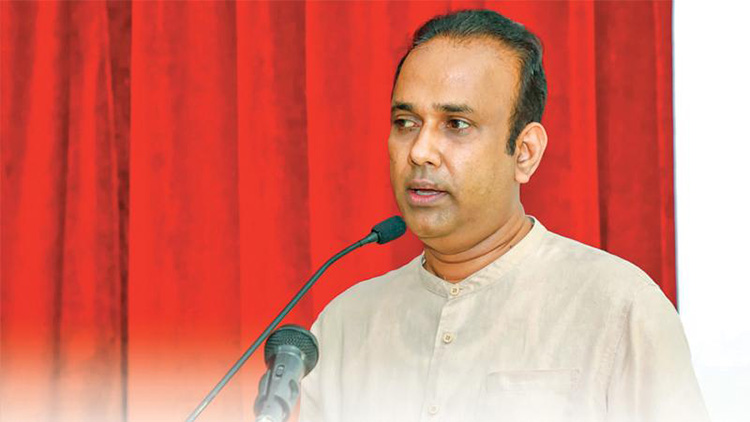
by Dr Gotabhya Ranasinghe
Senior Consultant Cardiologist
National Hospital Sri Lanka
When we sought a meeting with Hon Dr. Ramesh Pathirana, Minister of Health, he graciously cleared his busy schedule to accommodate us. Renowned for his attentive listening and deep understanding, Minister Pathirana is dedicated to advancing the health sector. His openness and transparency exemplify the qualities of an exemplary politician and minister.
Dr. Palitha Mahipala, the current Health Secretary, demonstrates both commendable enthusiasm and unwavering support. This combination of attributes makes him a highly compatible colleague for the esteemed Minister of Health.
Our discussion centered on a project that has been in the works for the past 30 years, one that no other minister had managed to advance.
Minister Pathirana, however, recognized the project’s significance and its potential to revolutionize care for heart patients.
The project involves the construction of a state-of-the-art facility at the premises of the National Hospital Colombo. The project’s location within the premises of the National Hospital underscores its importance and relevance to the healthcare infrastructure of the nation.
This facility will include a cardiology building and a tertiary care center, equipped with the latest technology to handle and treat all types of heart-related conditions and surgeries.
Securing funding was a major milestone for this initiative. Minister Pathirana successfully obtained approval for a $40 billion loan from the Asian Development Bank. With the funding in place, the foundation stone is scheduled to be laid in September this year, and construction will begin in January 2025.
This project guarantees a consistent and uninterrupted supply of stents and related medications for heart patients. As a result, patients will have timely access to essential medical supplies during their treatment and recovery. By securing these critical resources, the project aims to enhance patient outcomes, minimize treatment delays, and maintain the highest standards of cardiac care.
Upon its fruition, this monumental building will serve as a beacon of hope and healing, symbolizing the unwavering dedication to improving patient outcomes and fostering a healthier society.We anticipate a future marked by significant progress and positive outcomes in Sri Lanka’s cardiovascular treatment landscape within the foreseeable timeframe.
Features
A LOVING TRIBUTE TO JESUIT FR. ALOYSIUS PIERIS ON HIS 90th BIRTHDAY

by Fr. Emmanuel Fernando, OMI
Jesuit Fr. Aloysius Pieris (affectionately called Fr. Aloy) celebrated his 90th birthday on April 9, 2024 and I, as the editor of our Oblate Journal, THE MISSIONARY OBLATE had gone to press by that time. Immediately I decided to publish an article, appreciating the untiring selfless services he continues to offer for inter-Faith dialogue, the renewal of the Catholic Church, his concern for the poor and the suffering Sri Lankan masses and to me, the present writer.
It was in 1988, when I was appointed Director of the Oblate Scholastics at Ampitiya by the then Oblate Provincial Fr. Anselm Silva, that I came to know Fr. Aloy more closely. Knowing well his expertise in matters spiritual, theological, Indological and pastoral, and with the collaborative spirit of my companion-formators, our Oblate Scholastics were sent to Tulana, the Research and Encounter Centre, Kelaniya, of which he is the Founder-Director, for ‘exposure-programmes’ on matters spiritual, biblical, theological and pastoral. Some of these dimensions according to my view and that of my companion-formators, were not available at the National Seminary, Ampitiya.
Ever since that time, our Oblate formators/ accompaniers at the Oblate Scholasticate, Ampitiya , have continued to send our Oblate Scholastics to Tulana Centre for deepening their insights and convictions regarding matters needed to serve the people in today’s context. Fr. Aloy also had tried very enthusiastically with the Oblate team headed by Frs. Oswald Firth and Clement Waidyasekara to begin a Theologate, directed by the Religious Congregations in Sri Lanka, for the contextual formation/ accompaniment of their members. It should very well be a desired goal of the Leaders / Provincials of the Religious Congregations.
Besides being a formator/accompanier at the Oblate Scholasticate, I was entrusted also with the task of editing and publishing our Oblate journal, ‘The Missionary Oblate’. To maintain the quality of the journal I continue to depend on Fr. Aloy for his thought-provoking and stimulating articles on Biblical Spirituality, Biblical Theology and Ecclesiology. I am very grateful to him for his generous assistance. Of late, his writings on renewal of the Church, initiated by Pope St. John XX111 and continued by Pope Francis through the Synodal path, published in our Oblate journal, enable our readers to focus their attention also on the needed renewal in the Catholic Church in Sri Lanka. Fr. Aloy appreciated very much the Synodal path adopted by the Jesuit Pope Francis for the renewal of the Church, rooted very much on prayerful discernment. In my Religious and presbyteral life, Fr.Aloy continues to be my spiritual animator / guide and ongoing formator / acccompanier.
Fr. Aloysius Pieris, BA Hons (Lond), LPh (SHC, India), STL (PFT, Naples), PhD (SLU/VC), ThD (Tilburg), D.Ltt (KU), has been one of the eminent Asian theologians well recognized internationally and one who has lectured and held visiting chairs in many universities both in the West and in the East. Many members of Religious Congregations from Asian countries have benefited from his lectures and guidance in the East Asian Pastoral Institute (EAPI) in Manila, Philippines. He had been a Theologian consulted by the Federation of Asian Bishops’ Conferences for many years. During his professorship at the Gregorian University in Rome, he was called to be a member of a special group of advisers on other religions consulted by Pope Paul VI.
Fr. Aloy is the author of more than 30 books and well over 500 Research Papers. Some of his books and articles have been translated and published in several countries. Among those books, one can find the following: 1) The Genesis of an Asian Theology of Liberation (An Autobiographical Excursus on the Art of Theologising in Asia, 2) An Asian Theology of Liberation, 3) Providential Timeliness of Vatican 11 (a long-overdue halt to a scandalous millennium, 4) Give Vatican 11 a chance, 5) Leadership in the Church, 6) Relishing our faith in working for justice (Themes for study and discussion), 7) A Message meant mainly, not exclusively for Jesuits (Background information necessary for helping Francis renew the Church), 8) Lent in Lanka (Reflections and Resolutions, 9) Love meets wisdom (A Christian Experience of Buddhism, 10) Fire and Water 11) God’s Reign for God’s poor, 12) Our Unhiddden Agenda (How we Jesuits work, pray and form our men). He is also the Editor of two journals, Vagdevi, Journal of Religious Reflection and Dialogue, New Series.
Fr. Aloy has a BA in Pali and Sanskrit from the University of London and a Ph.D in Buddhist Philosophy from the University of Sri Lankan, Vidyodaya Campus. On Nov. 23, 2019, he was awarded the prestigious honorary Doctorate of Literature (D.Litt) by the Chancellor of the University of Kelaniya, the Most Venerable Welamitiyawe Dharmakirthi Sri Kusala Dhamma Thera.
Fr. Aloy continues to be a promoter of Gospel values and virtues. Justice as a constitutive dimension of love and social concern for the downtrodden masses are very much noted in his life and work. He had very much appreciated the commitment of the late Fr. Joseph (Joe) Fernando, the National Director of the Social and Economic Centre (SEDEC) for the poor.
In Sri Lanka, a few religious Congregations – the Good Shepherd Sisters, the Christian Brothers, the Marist Brothers and the Oblates – have invited him to animate their members especially during their Provincial Congresses, Chapters and International Conferences. The mainline Christian Churches also have sought his advice and followed his seminars. I, for one, regret very much, that the Sri Lankan authorities of the Catholic Church –today’s Hierarchy—- have not sought Fr.
Aloy’s expertise for the renewal of the Catholic Church in Sri Lanka and thus have not benefited from the immense store of wisdom and insight that he can offer to our local Church while the Sri Lankan bishops who governed the Catholic church in the immediate aftermath of the Second Vatican Council (Edmund Fernando OMI, Anthony de Saram, Leo Nanayakkara OSB, Frank Marcus Fernando, Paul Perera,) visited him and consulted him on many matters. Among the Tamil Bishops, Bishop Rayappu Joseph was keeping close contact with him and Bishop J. Deogupillai hosted him and his team visiting him after the horrible Black July massacre of Tamils.
Features
A fairy tale, success or debacle

Sri Lanka-Singapore Free Trade Agreement
By Gomi Senadhira
senadhiragomi@gmail.com
“You might tell fairy tales, but the progress of a country cannot be achieved through such narratives. A country cannot be developed by making false promises. The country moved backward because of the electoral promises made by political parties throughout time. We have witnessed that the ultimate result of this is the country becoming bankrupt. Unfortunately, many segments of the population have not come to realize this yet.” – President Ranil Wickremesinghe, 2024 Budget speech
Any Sri Lankan would agree with the above words of President Wickremesinghe on the false promises our politicians and officials make and the fairy tales they narrate which bankrupted this country. So, to understand this, let’s look at one such fairy tale with lots of false promises; Ranil Wickremesinghe’s greatest achievement in the area of international trade and investment promotion during the Yahapalana period, Sri Lanka-Singapore Free Trade Agreement (SLSFTA).
It is appropriate and timely to do it now as Finance Minister Wickremesinghe has just presented to parliament a bill on the National Policy on Economic Transformation which includes the establishment of an Office for International Trade and the Sri Lanka Institute of Economics and International Trade.
Was SLSFTA a “Cleverly negotiated Free Trade Agreement” as stated by the (former) Minister of Development Strategies and International Trade Malik Samarawickrama during the Parliamentary Debate on the SLSFTA in July 2018, or a colossal blunder covered up with lies, false promises, and fairy tales? After SLSFTA was signed there were a number of fairy tales published on this agreement by the Ministry of Development Strategies and International, Institute of Policy Studies, and others.
However, for this article, I would like to limit my comments to the speech by Minister Samarawickrama during the Parliamentary Debate, and the two most important areas in the agreement which were covered up with lies, fairy tales, and false promises, namely: revenue loss for Sri Lanka and Investment from Singapore. On the other important area, “Waste products dumping” I do not want to comment here as I have written extensively on the issue.
1. The revenue loss
During the Parliamentary Debate in July 2018, Minister Samarawickrama stated “…. let me reiterate that this FTA with Singapore has been very cleverly negotiated by us…. The liberalisation programme under this FTA has been carefully designed to have the least impact on domestic industry and revenue collection. We have included all revenue sensitive items in the negative list of items which will not be subject to removal of tariff. Therefore, 97.8% revenue from Customs duty is protected. Our tariff liberalisation will take place over a period of 12-15 years! In fact, the revenue earned through tariffs on goods imported from Singapore last year was Rs. 35 billion.
The revenue loss for over the next 15 years due to the FTA is only Rs. 733 million– which when annualised, on average, is just Rs. 51 million. That is just 0.14% per year! So anyone who claims the Singapore FTA causes revenue loss to the Government cannot do basic arithmetic! Mr. Speaker, in conclusion, I call on my fellow members of this House – don’t mislead the public with baseless criticism that is not grounded in facts. Don’t look at petty politics and use these issues for your own political survival.”
I was surprised to read the minister’s speech because an article published in January 2018 in “The Straits Times“, based on information released by the Singaporean Negotiators stated, “…. With the FTA, tariff savings for Singapore exports are estimated to hit $10 million annually“.
As the annual tariff savings (that is the revenue loss for Sri Lanka) calculated by the Singaporean Negotiators, Singaporean $ 10 million (Sri Lankan rupees 1,200 million in 2018) was way above the rupees’ 733 million revenue loss for 15 years estimated by the Sri Lankan negotiators, it was clear to any observer that one of the parties to the agreement had not done the basic arithmetic!
Six years later, according to a report published by “The Morning” newspaper, speaking at the Committee on Public Finance (COPF) on 7th May 2024, Mr Samarawickrama’s chief trade negotiator K.J. Weerasinghehad had admitted “…. that forecasted revenue loss for the Government of Sri Lanka through the Singapore FTA is Rs. 450 million in 2023 and Rs. 1.3 billion in 2024.”
If these numbers are correct, as tariff liberalisation under the SLSFTA has just started, we will pass Rs 2 billion very soon. Then, the question is how Sri Lanka’s trade negotiators made such a colossal blunder. Didn’t they do their basic arithmetic? If they didn’t know how to do basic arithmetic they should have at least done their basic readings. For example, the headline of the article published in The Straits Times in January 2018 was “Singapore, Sri Lanka sign FTA, annual savings of $10m expected”.
Anyway, as Sri Lanka’s chief negotiator reiterated at the COPF meeting that “…. since 99% of the tariffs in Singapore have zero rates of duty, Sri Lanka has agreed on 80% tariff liberalisation over a period of 15 years while expecting Singapore investments to address the imbalance in trade,” let’s turn towards investment.
Investment from Singapore
In July 2018, speaking during the Parliamentary Debate on the FTA this is what Minister Malik Samarawickrama stated on investment from Singapore, “Already, thanks to this FTA, in just the past two-and-a-half months since the agreement came into effect we have received a proposal from Singapore for investment amounting to $ 14.8 billion in an oil refinery for export of petroleum products. In addition, we have proposals for a steel manufacturing plant for exports ($ 1 billion investment), flour milling plant ($ 50 million), sugar refinery ($ 200 million). This adds up to more than $ 16.05 billion in the pipeline on these projects alone.
And all of these projects will create thousands of more jobs for our people. In principle approval has already been granted by the BOI and the investors are awaiting the release of land the environmental approvals to commence the project.
I request the Opposition and those with vested interests to change their narrow-minded thinking and join us to develop our country. We must always look at what is best for the whole community, not just the few who may oppose. We owe it to our people to courageously take decisions that will change their lives for the better.”
According to the media report I quoted earlier, speaking at the Committee on Public Finance (COPF) Chief Negotiator Weerasinghe has admitted that Sri Lanka was not happy with overall Singapore investments that have come in the past few years in return for the trade liberalisation under the Singapore-Sri Lanka Free Trade Agreement. He has added that between 2021 and 2023 the total investment from Singapore had been around $162 million!
What happened to those projects worth $16 billion negotiated, thanks to the SLSFTA, in just the two-and-a-half months after the agreement came into effect and approved by the BOI? I do not know about the steel manufacturing plant for exports ($ 1 billion investment), flour milling plant ($ 50 million) and sugar refinery ($ 200 million).
However, story of the multibillion-dollar investment in the Petroleum Refinery unfolded in a manner that would qualify it as the best fairy tale with false promises presented by our politicians and the officials, prior to 2019 elections.
Though many Sri Lankans got to know, through the media which repeatedly highlighted a plethora of issues surrounding the project and the questionable credentials of the Singaporean investor, the construction work on the Mirrijiwela Oil Refinery along with the cement factory began on the24th of March 2019 with a bang and Minister Ranil Wickremesinghe and his ministers along with the foreign and local dignitaries laid the foundation stones.
That was few months before the 2019 Presidential elections. Inaugurating the construction work Prime Minister Ranil Wickremesinghe said the projects will create thousands of job opportunities in the area and surrounding districts.
The oil refinery, which was to be built over 200 acres of land, with the capacity to refine 200,000 barrels of crude oil per day, was to generate US$7 billion of exports and create 1,500 direct and 3,000 indirect jobs. The construction of the refinery was to be completed in 44 months. Four years later, in August 2023 the Cabinet of Ministers approved the proposal presented by President Ranil Wickremesinghe to cancel the agreement with the investors of the refinery as the project has not been implemented! Can they explain to the country how much money was wasted to produce that fairy tale?
It is obvious that the President, ministers, and officials had made huge blunders and had deliberately misled the public and the parliament on the revenue loss and potential investment from SLSFTA with fairy tales and false promises.
As the president himself said, a country cannot be developed by making false promises or with fairy tales and these false promises and fairy tales had bankrupted the country. “Unfortunately, many segments of the population have not come to realize this yet”.
(The writer, a specialist and an activist on trade and development issues . )


